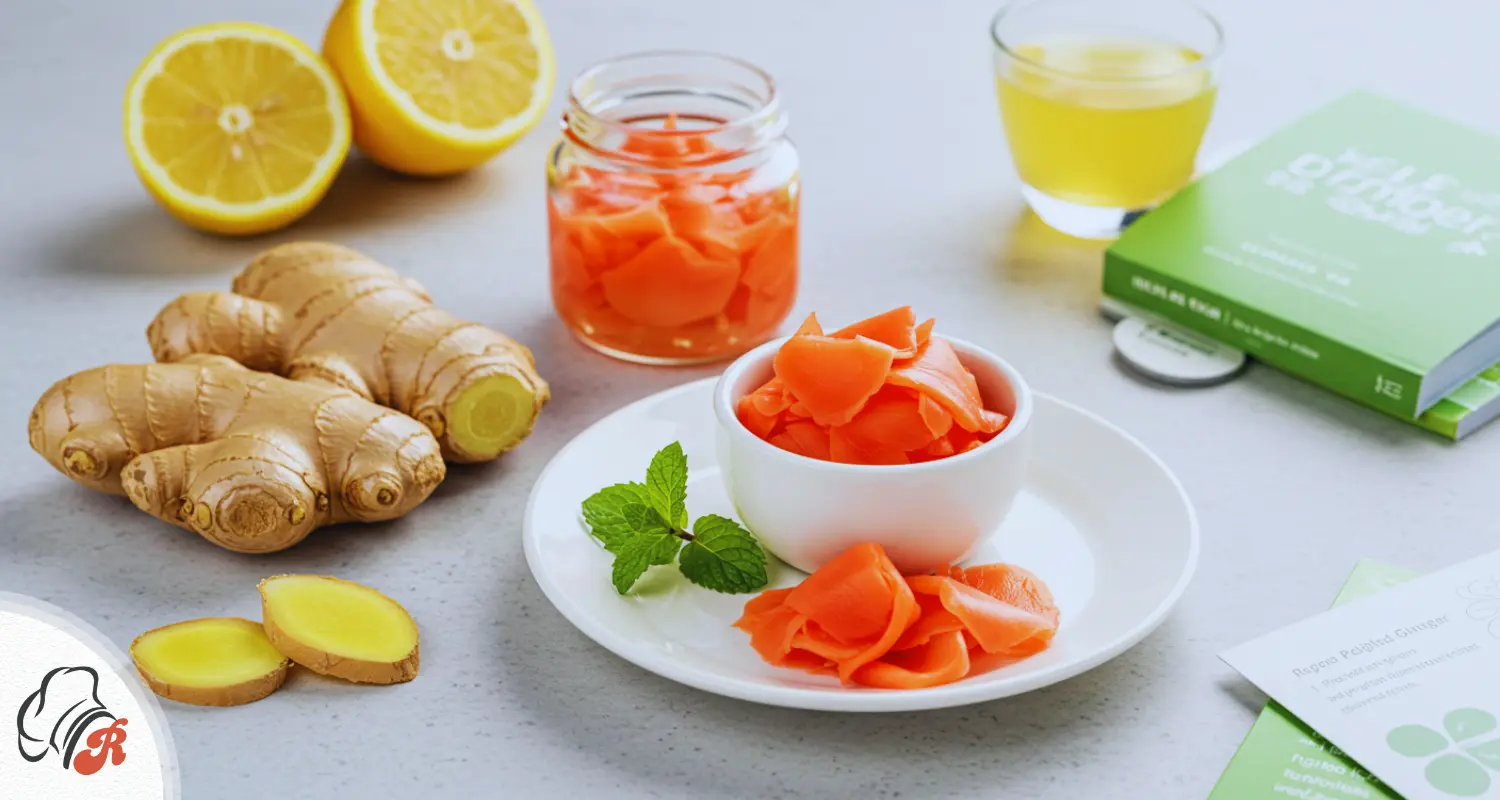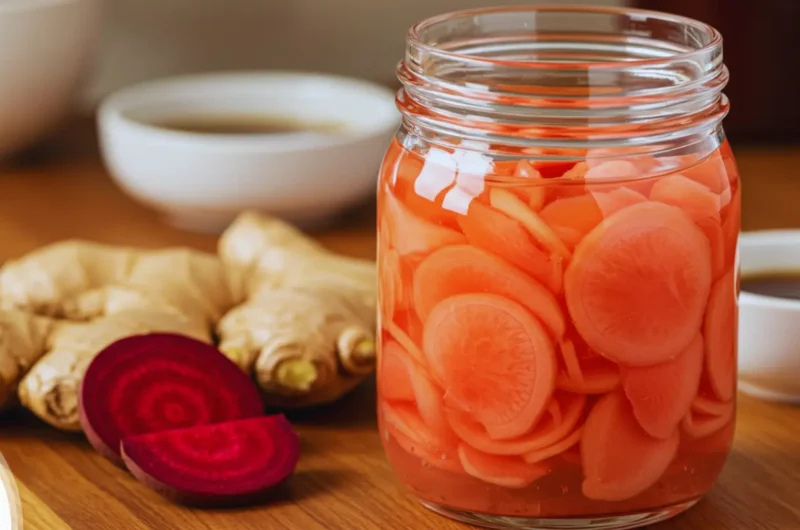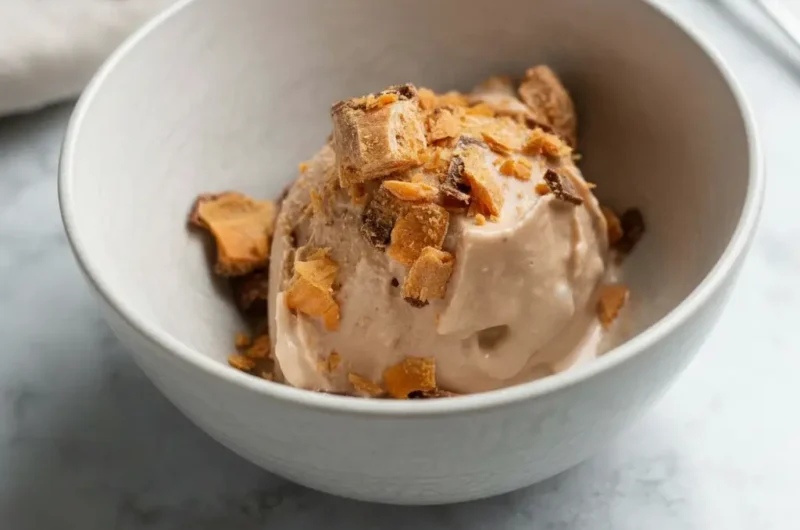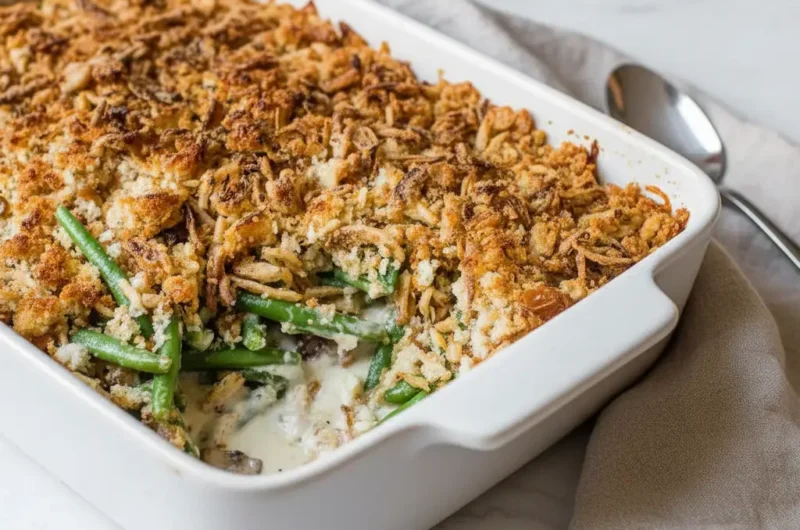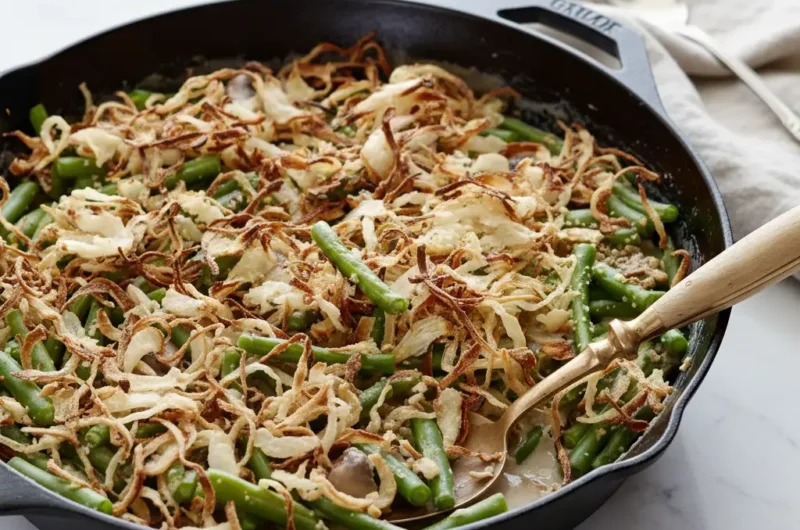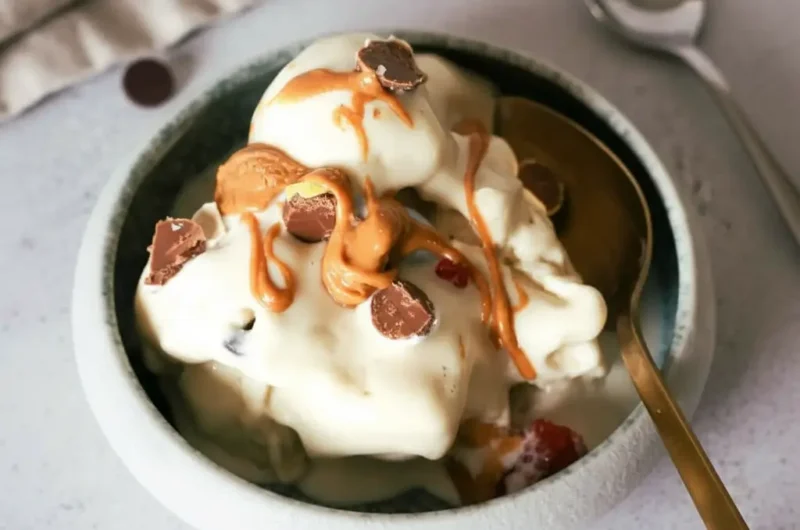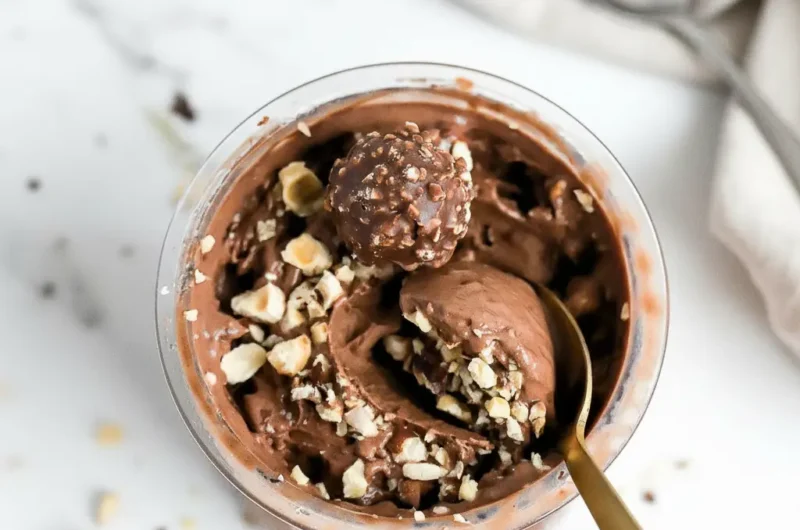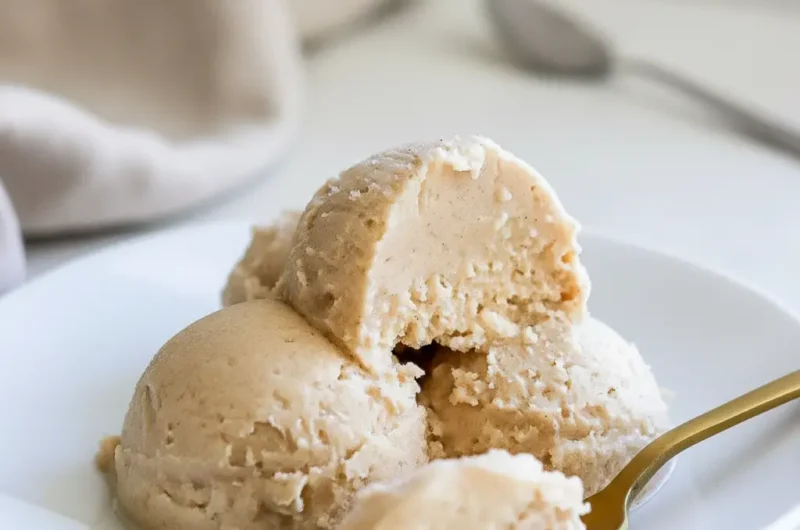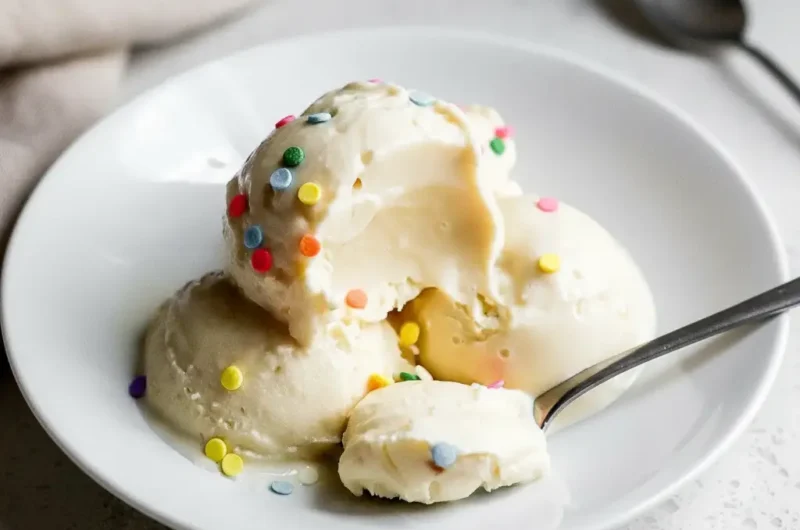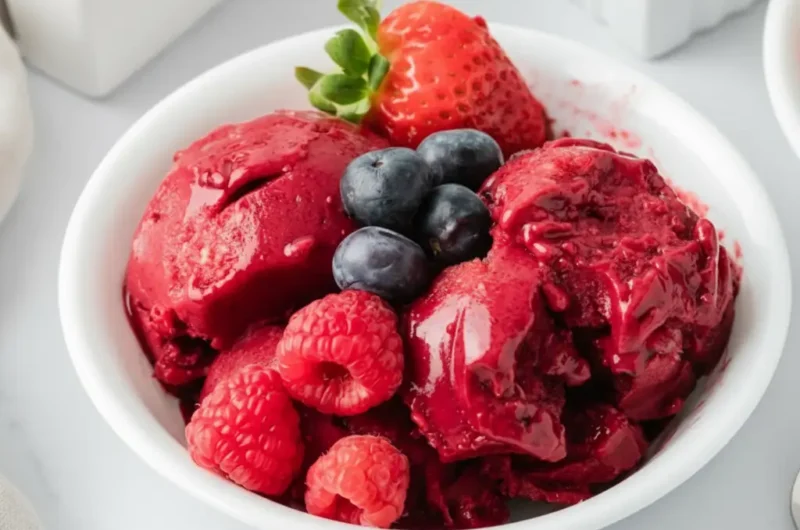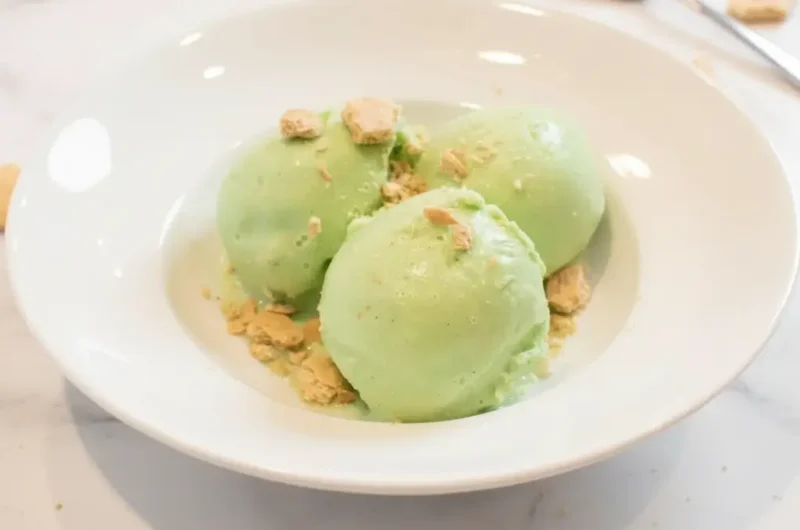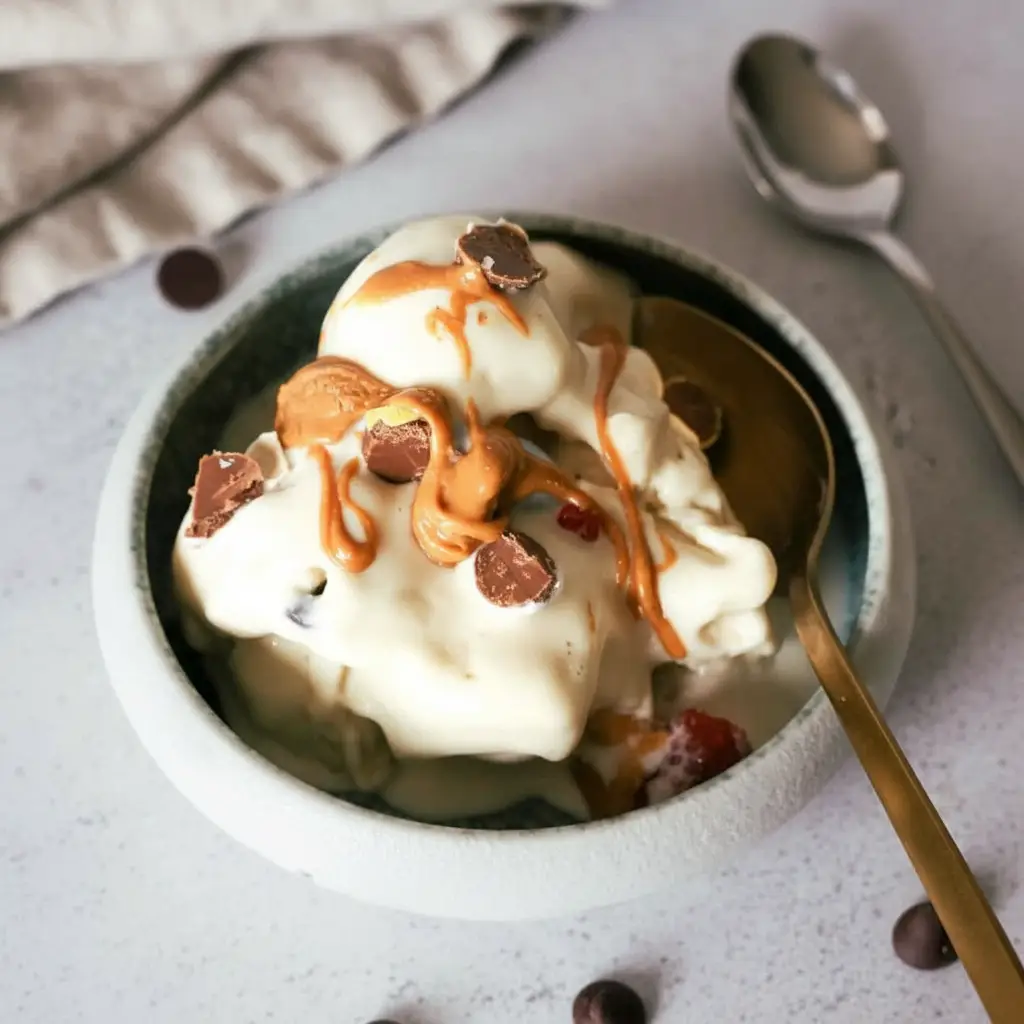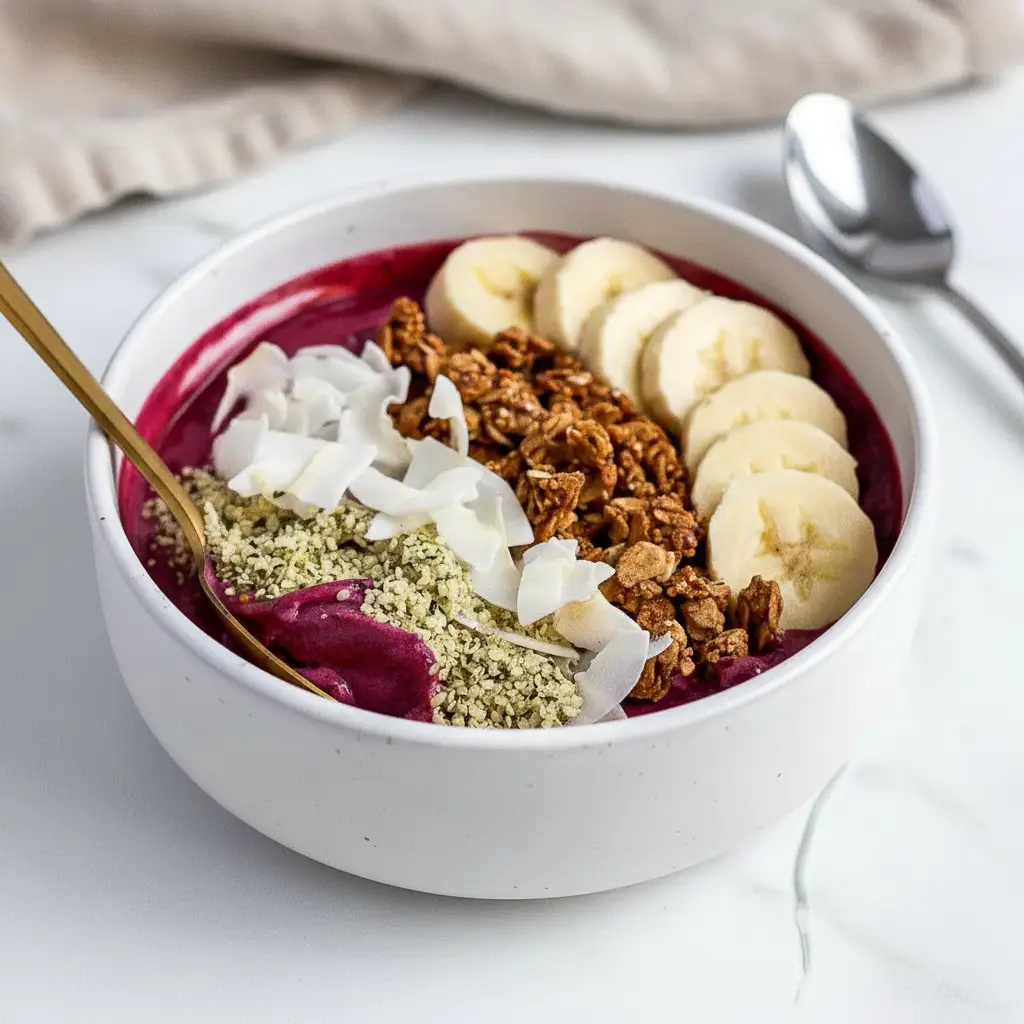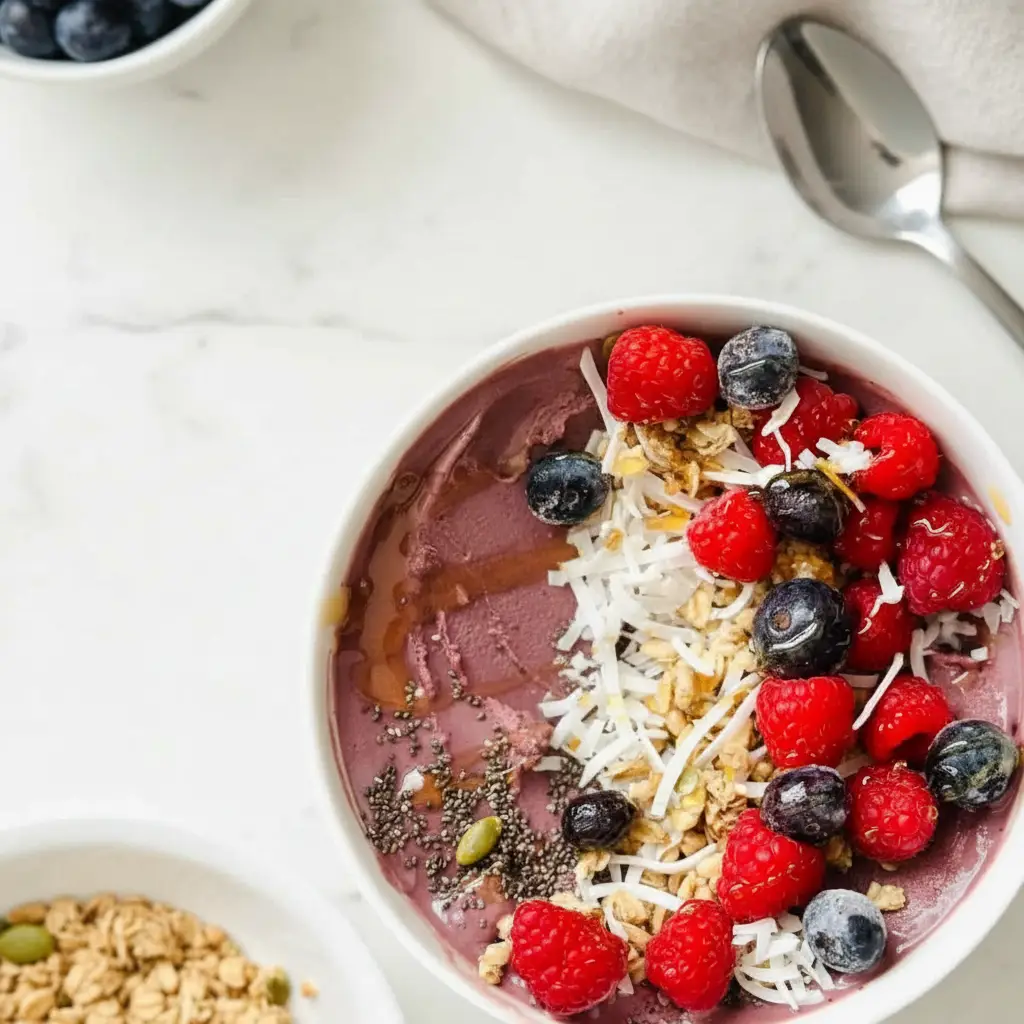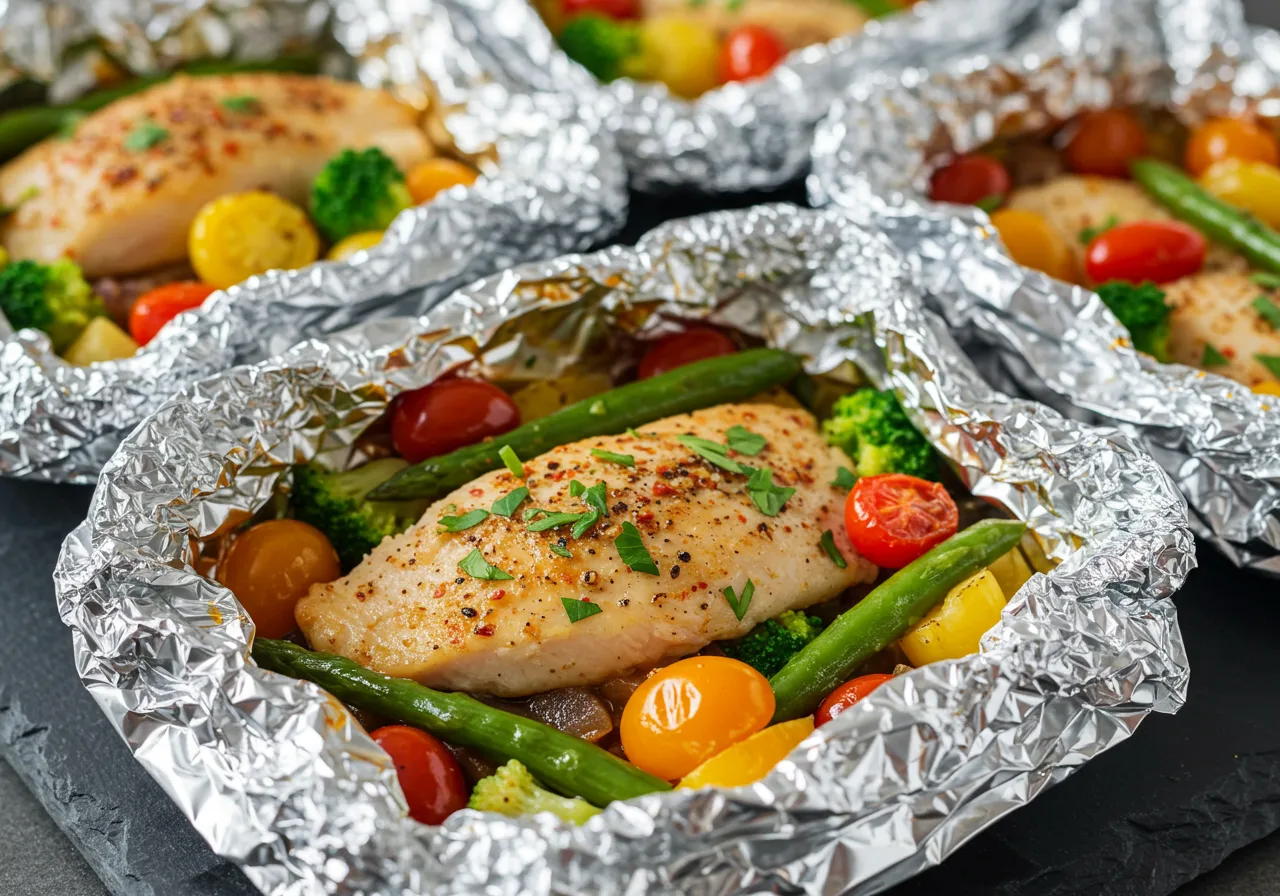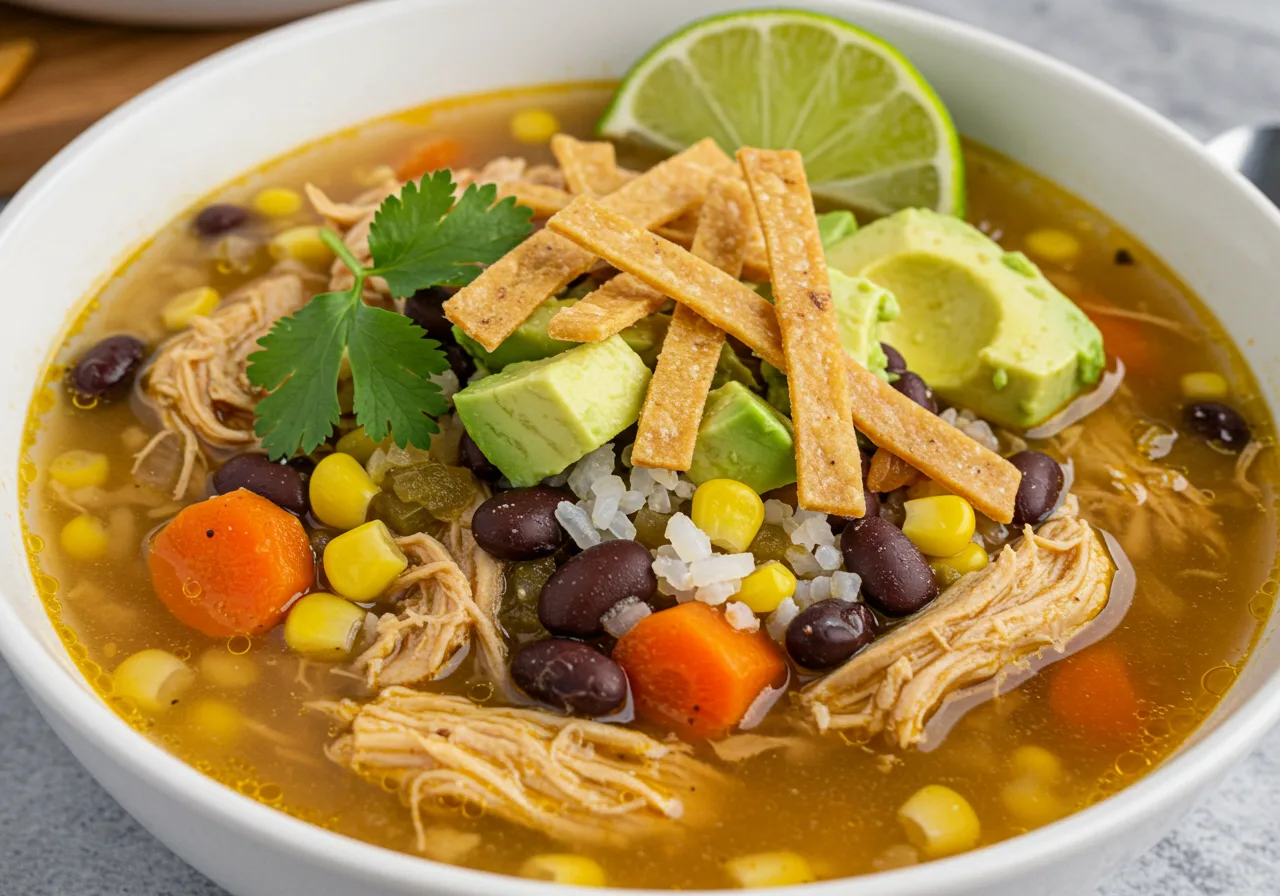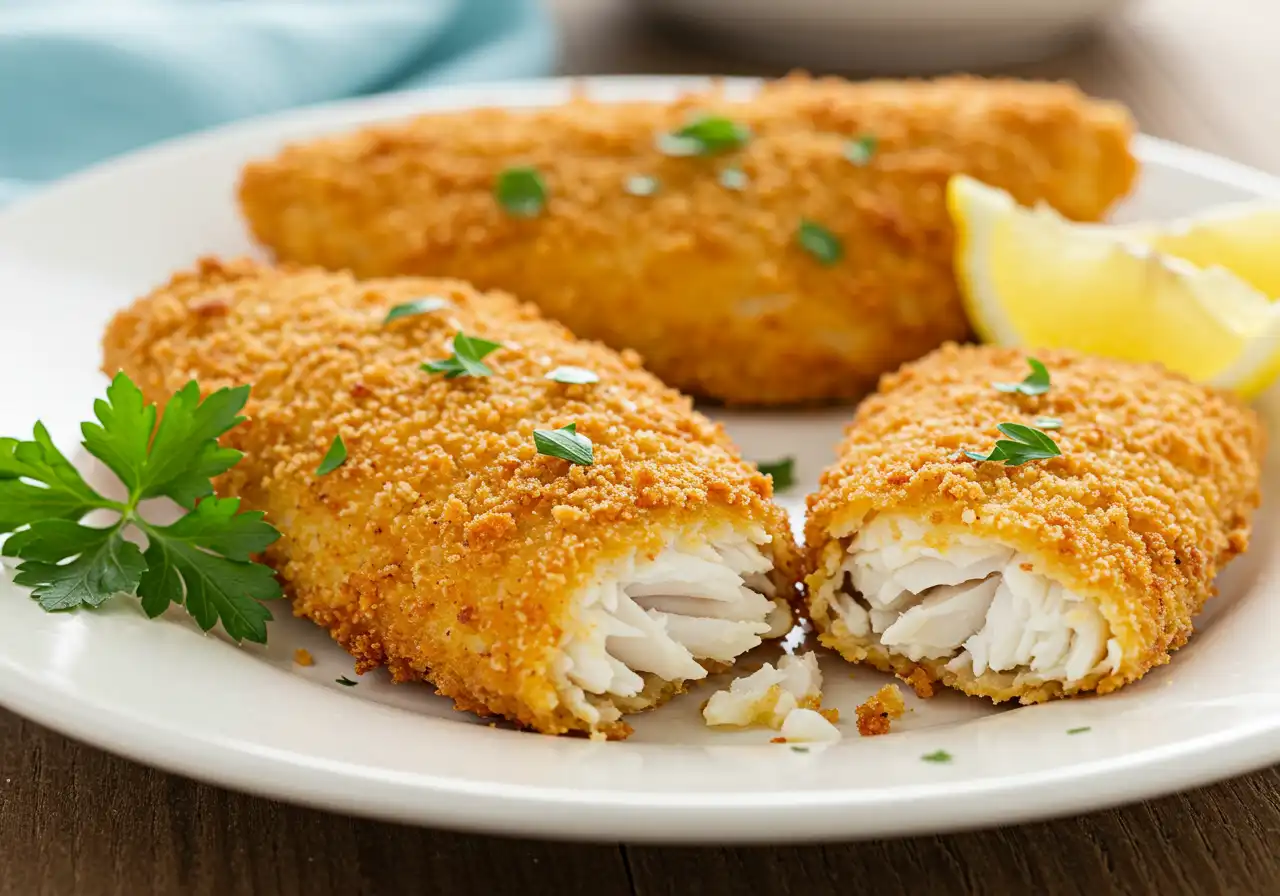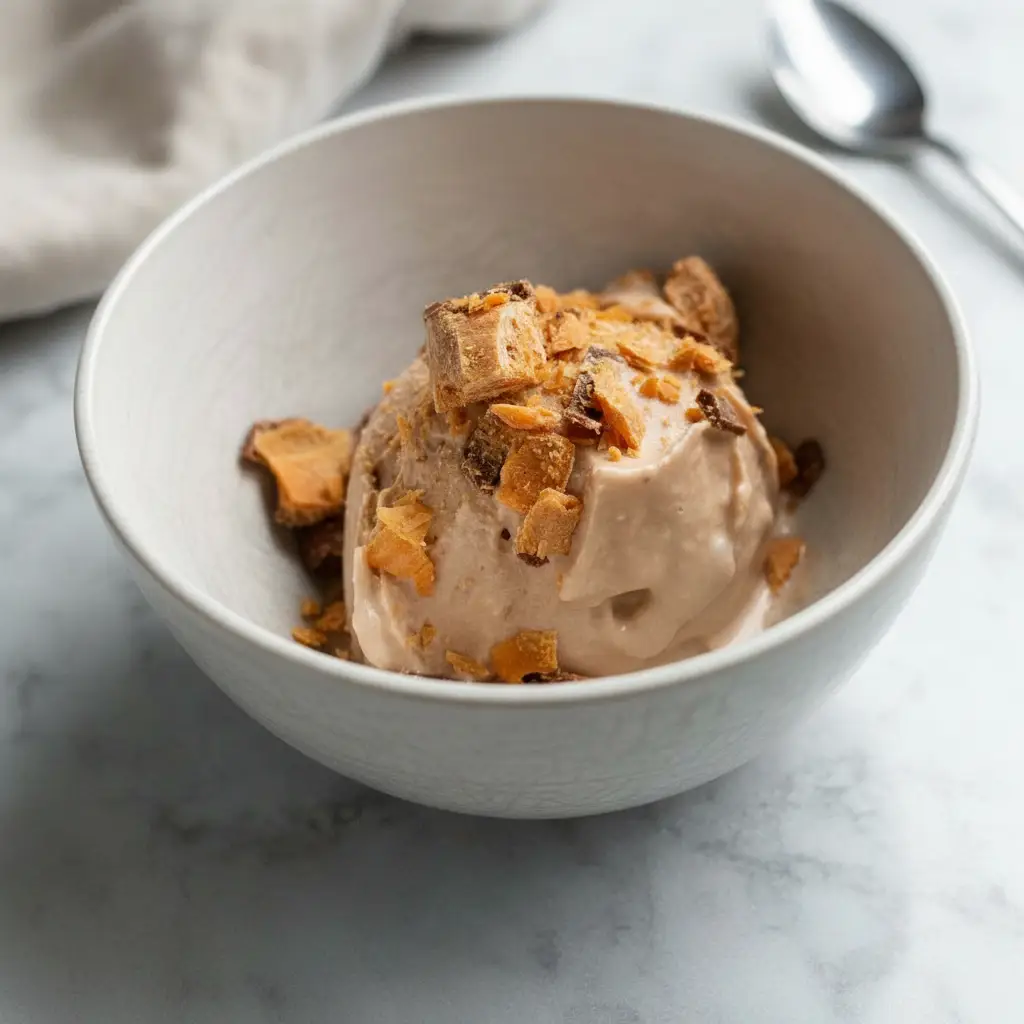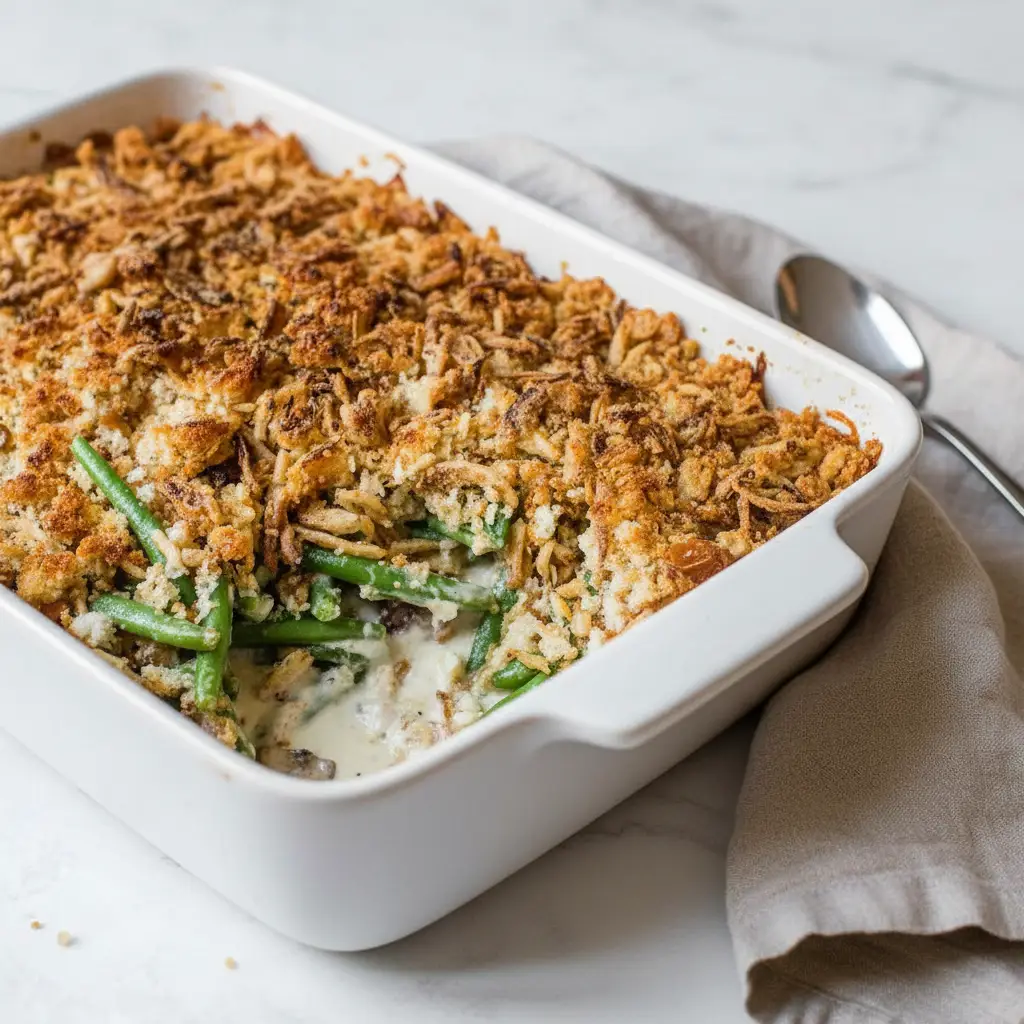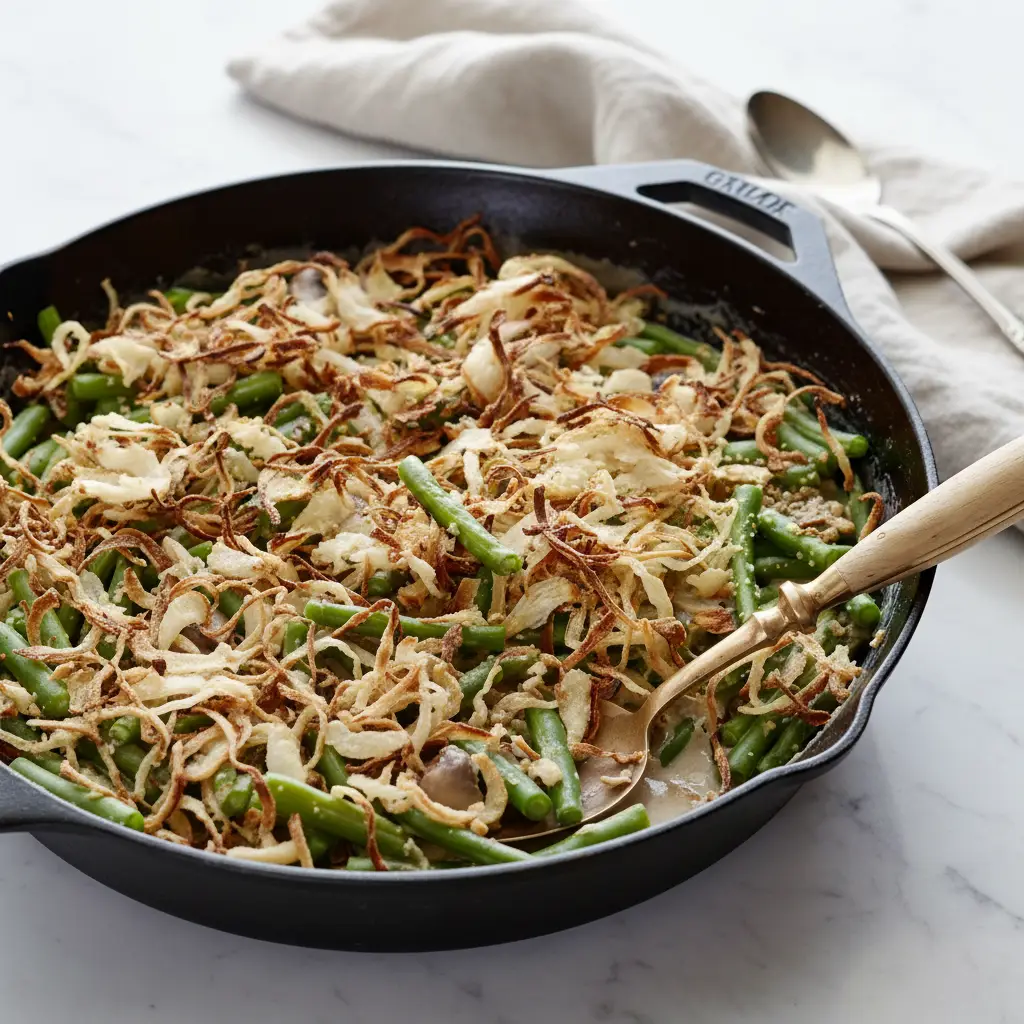Pickled ginger root recipe is a tangy and versatile ingredient, loved for its sweet and slightly spicy flavor. Making it at home is easy, and with this quick recipe, you can have a delicious batch ready in just 24 hours.
Here’s everything you need to know about making perfect pickled ginger and how to use it to elevate your dishes.
Pickled Ginger Root Recipe
Course: Condiment, BreakfastCuisine: JapaneseDifficulty: Easy4
servings10
minutes4
minutes40
kcal14
minutesA simple, quick recipe for pickled ginger that’s perfect for sushi, salads, and more. This recipe uses fresh ginger, vinegar, and sugar for a tangy-sweet condiment ready in just 24 hours.
Ingredients
200g fresh ginger root (peeled and thinly sliced)
1 cup rice vinegar or apple cider vinegar
1/2 cup granulated sugar (or natural sweetener for sugar-free)
1/2 teaspoon salt
Optional: 1 small slice of beet for natural pink color
Directions
- Peel the ginger using a spoon and slice it thinly with a knife or mandoline.
- Blanch the ginger slices in boiling water for 1 minute, then drain and set aside.
- In a saucepan, combine rice vinegar, sugar, and salt. Heat over medium heat, stirring until the sugar dissolves completely. Remove from heat.
- Pack the ginger slices into a clean glass jar. If you want a pink hue, add a small piece of beet to the jar.
- Pour the warm vinegar mixture over the ginger, ensuring it is fully submerged. Let the jar cool to room temperature.
- Seal the jar tightly and refrigerate for 24 hours before serving to allow the flavors to develop.
Recipe Video
Notes
- Use young ginger for a more tender texture and natural pink tint.
- Properly stored in an airtight jar, pickled ginger can last up to one month in the refrigerator.
- Adjust the sugar or vinegar to your taste preference.
Table of Contents
Why Pickled Ginger?
Pickled ginger isn’t just a garnish—it’s a flavorful and healthy addition to your kitchen. Its unique combination of taste and benefits makes it a must-have for both traditional and modern dishes.
Health Benefits of Pickled Ginger
Pickled ginger isn’t just tasty; it’s packed with nutrients and antioxidants that make it good for your body too. Eating pickled ginger can help your digestive system work more efficiently and even ease stomach discomfort like bloating and nausea. Its anti-inflammatory properties also make it a natural remedy for boosting immunity and reducing everyday aches and pains.
Packed with Antioxidants
The antioxidants in ginger fight free radicals in the body, which helps prevent damage to cells. This benefit can improve overall health, leaving you feeling more energized.
Aids in Digestion
Pickled ginger has natural compounds that can help ease indigestion and nausea. Whether you eat it after a big meal or during a stomach upset, it offers gentle relief.
Versatile Uses for Pickled Ginger
Pickled ginger isn’t just for sushi—it’s a versatile ingredient you can use in countless recipes. From Asian-inspired dishes to fresh salads, it enhances meals with a burst of tangy, zesty flavor.
Enhancing Asian-Inspired Dishes
Pickled ginger is a must-have for sushi, but it also pairs well with rice bowls, ramen, or even stir-fried vegetables. Its sharp flavor cuts through rich, savory foods, adding balance to the dish.
Unique Salad Additions
Add thinly sliced pickled ginger to a leafy green or noodle salad for a refreshing twist. The tangy flavor brightens up the other ingredients, making your salad stand out.
Affordable and Easy to Make
Making pickled ginger at home is budget-friendly and simple. With just a handful of ingredients, you can skip store-bought versions and customize the flavor exactly the way you like it.
Simple Ingredients
Homemade pickled ginger uses basic pantry staples like vinegar, sugar, and salt. The fresh ginger itself is affordable and easy to find.
Customizable Flavor
When you make pickled ginger yourself, you can adjust the sweetness, tanginess, or spice level to match your preferences.
Quick Pickled Ginger Root Recipe: Ready in 24 Hours
Making pickled ginger doesn’t have to be complicated. This recipe is simple and yields perfect results in just one day.
Ingredients for Pickled Ginger
To make pickled ginger, you’ll need fresh ginger root, vinegar, sugar, and salt. These simple ingredients come together to create the perfect balance of sweet and tangy flavors.
Choosing Fresh Ginger
The fresher the ginger, the better the results. Look for firm ginger roots with smooth skin, as these will yield the best texture and flavor for pickling.
Selecting Vinegar and Sweeteners
Vinegar is the key to a good brine. Rice vinegar gives a traditional Japanese flavor, while apple cider vinegar adds a fruity tang. Sugar or natural sweeteners like honey help balance the tanginess.
Step-by-Step Process
The process of making pickled ginger is straightforward and requires just a few steps. Slicing the ginger thinly and preparing a flavorful brine are the most important parts.
Preparing the Ginger
Peel the ginger with a spoon or vegetable peeler, then slice it thinly using a sharp knife or mandoline slicer. Thin slices absorb the brine better and are easier to eat.
Creating the Pickling Brine
In a small saucepan, combine your vinegar, sugar, and salt. Heat the mixture gently, stirring until the sugar dissolves completely. Warm brine infuses the ginger more effectively.
Storing and Waiting
After preparing the ginger and brine, you’ll need to assemble and refrigerate the jar to let the flavors develop.
Assembling the Jar
Pack the sliced ginger tightly into a clean glass jar. Pour the warm brine over the ginger, making sure it’s completely submerged to ensure even pickling.
Refrigeration and Flavor Development
Seal the jar tightly and let it cool at room temperature before refrigerating. Leave it in the fridge for 24 hours to allow the ginger to soak up the flavors of the brine.
Best Pickled Ginger Root Recipe: Tips for Success
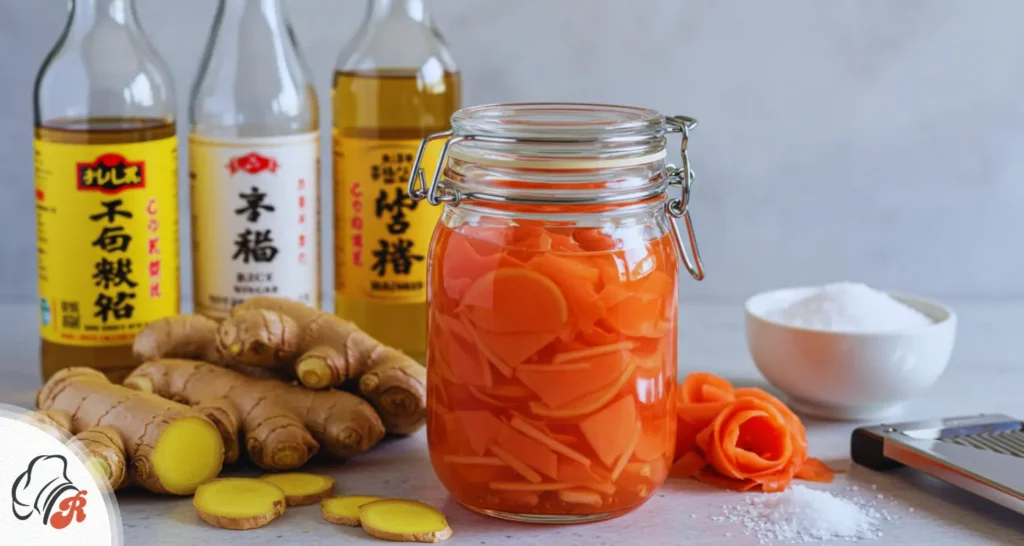
To achieve the best results, keep these tips in mind when preparing your pickled ginger.
Choosing the Right Ginger
The quality of ginger you use will greatly affect the final result. Fresh, young ginger is always the best choice for pickling because of its mild flavor and tender texture.
Benefits of Young Ginger
Young ginger, with its smooth, thin skin and pale color, is perfect for pickling. It’s less fibrous than mature ginger, making it easier to slice and eat.
Avoiding Overripe Ginger
Older ginger tends to be stringy and tough, which can result in a less enjoyable texture when pickled.
Perfecting the Brine
The brine is the heart of your pickled ginger recipe. Adjusting the brine’s sweetness and acidity can make or break the flavor.
Balancing Sweetness and Tang
Taste the brine before pouring it over the ginger. If it’s too tart, add more sugar; if it’s too sweet, increase the vinegar slightly.
Experimenting with Additions
You can customize your pickled ginger by adding spices like chili flakes or turmeric to the brine for extra flavor and color.
Storage and Shelf Life
Proper storage is crucial for maintaining the flavor and freshness of your pickled ginger.
Proper Sealing
Always use clean jars with tight lids to prevent contamination and keep the ginger fresh.
Refrigeration Tips
Store the jar in the fridge and use clean utensils to scoop out ginger. Properly stored pickled ginger can last up to a month.
Japanese Pickled Ginger Recipe: A Classic Take
Japanese pickled ginger, or gari, is a traditional recipe that’s sweet, tangy, and slightly spicy. It’s the perfect accompaniment to sushi and other Japanese dishes.
What Makes Gari Unique?
The balance of sweetness and tang is what sets gari apart from other pickled ginger recipes. It’s designed to cleanse the palate between bites of sushi, enhancing the dining experience.
Young Ginger for Authenticity
Traditional gari is made with young ginger, which has a mild flavor and naturally turns pink when pickled.
Subtle Sweetness and Tang
Gari leans toward a sweeter profile compared to other pickled ginger, with a milder acidic tang.
How to Make Gari
Making authentic gari involves a few key steps, starting with preparing the ginger and crafting a sweet brine.
Preparing the Ginger
Thinly slice young ginger and blanch it in boiling water for a few seconds to soften it and reduce its raw bite.
Making the Sweet Brine
Combine rice vinegar, sugar, and salt in a saucepan. Heat until the sugar dissolves completely, creating a smooth and balanced brine.
Serving Gari
Gari is traditionally served with sushi but works well with other dishes too.
With Sushi
A small piece of gari cleanses the palate, making each sushi bite taste fresh and distinct.
Beyond Sushi
Gari also pairs wonderfully with grilled fish, steamed rice, or even miso soup.
Pink Pickled Ginger Recipe: The Natural Way
If you’ve ever wondered how pickled ginger gets its pretty pink hue, the answer lies in nature. Pink pickled ginger can be made without any artificial dyes, and the result is both visually appealing and delicious.
What Makes Pickled Ginger Pink?
The natural pink color of pickled ginger comes from either young ginger or the addition of beet to the recipe.
Using Young Ginger
Young ginger has a pale pink tint near its edges, which naturally intensifies when vinegar is added. This is the easiest way to achieve the pink color.
Adding Beet for Color
If you can’t find young ginger, adding a small slice of beet to your jar will do the trick. The beet releases a natural dye, turning the ginger a lovely shade of pink without affecting the flavor.
Step-by-Step Recipe
Making pink pickled ginger is as simple as preparing the ginger and adding the right ingredients.
Preparing the Ginger
Start by peeling the ginger using a spoon, then slice it as thinly as possible. Thin slices absorb the brine better and give that classic texture you expect in pickled ginger.
Crafting the Brine
Combine rice vinegar, sugar, and salt in a saucepan. Warm the mixture over medium heat until the sugar dissolves completely. Pour the brine over your sliced ginger, adding the beet if necessary.
Benefits of Pink Pickled Ginger
Pink pickled ginger isn’t just pretty—it’s packed with flavor and health benefits.
Visual Appeal for Dishes
Whether you’re serving sushi, salads, or rice bowls, the pop of pink elevates the presentation of your dish.
Packed With Antioxidants
Ginger is full of antioxidants, which help combat inflammation and boost overall health.
Pickled Ginger with Apple Cider Vinegar
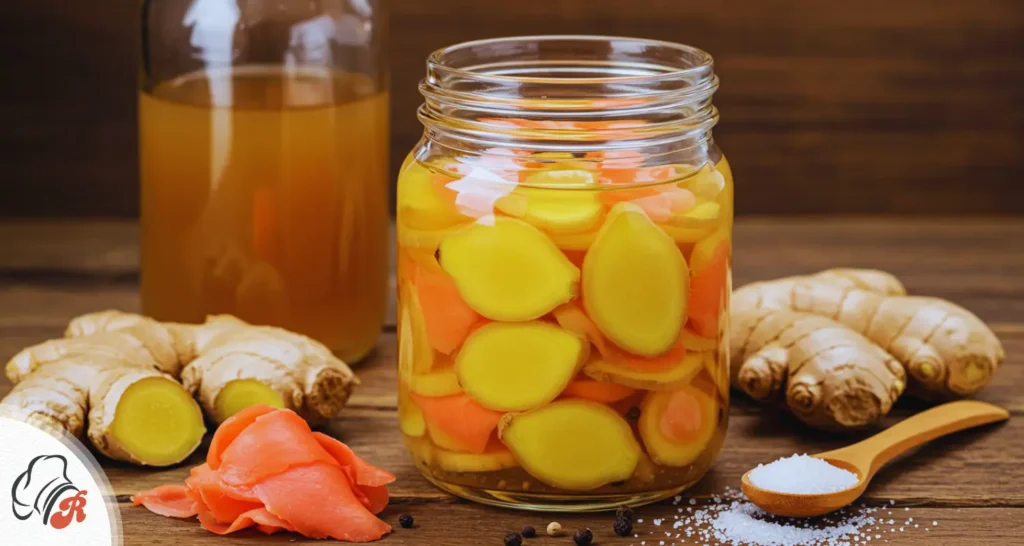
Using apple cider vinegar to pickle ginger is a delicious twist on the traditional recipe. It adds a fruity, tangy depth of flavor that pairs beautifully with the spice of ginger.
Why Choose Apple Cider Vinegar?
Apple cider vinegar has unique properties that make it a great choice for pickling.
Health Benefits
Apple cider vinegar is known for supporting digestion and promoting gut health. It adds even more nutritional value to the already healthy ginger.
Flavor Boost
Compared to rice vinegar, apple cider vinegar brings a slightly fruity and robust flavor to the brine.
How to Make Pickled Ginger Root Recipe with Apple Cider Vinegar
The process for making this variation of pickled ginger is straightforward.
Slicing the Ginger
As always, start by peeling and slicing the ginger thinly. Uniform slices ensure that the brine is absorbed evenly.
Making the Brine
In a saucepan, combine apple cider vinegar, sugar, and salt. Heat gently until the sugar dissolves, then pour the mixture over the sliced ginger.
Tips for Success
Achieving the perfect flavor and texture with apple cider vinegar is easy if you follow a few simple tips.
Balancing the Acidity
Taste the brine before pouring it over the ginger. If it’s too strong, add a small amount of water to mellow the acidity.
Letting It Rest
For the best flavor, let the pickled ginger rest for at least 24 hours. The longer it sits, the more the flavors develop.
Pickled Ginger Recipe Without Sugar: A Healthy Alternative
If you’re looking for a healthier version of pickled ginger, this sugar-free recipe is a great option. It’s just as flavorful but better suited for low-sugar diets.
Why Go Sugar-Free?
Removing sugar from the recipe makes it suitable for those watching their sugar intake.
Dietary Benefits
A sugar-free version is ideal for people with diabetes or anyone trying to reduce added sugar in their diet.
Retaining the Flavor
By using natural sweeteners like honey or stevia, you can still achieve the perfect balance of sweetness and tang.
How to Make Sugar-Free Pickled Ginger
Making a sugar-free version is simple and doesn’t require any special ingredients.
Sweetener Alternatives
Replace sugar with a small amount of honey, agave syrup, or stevia. Adjust the quantity based on your taste preferences.
Adjusting the Brine
The rest of the brine remains the same: use rice vinegar or apple cider vinegar, and add salt to enhance the flavor.
Benefits of Sugar-Free Pickled Ginger
This healthier version offers the same great taste with fewer calories.
Great for Special Diets
Whether you’re following a keto, diabetic, or low-sugar diet, this recipe fits your needs without compromising on flavor.
Still Versatile
Sugar-free pickled ginger works just as well in sushi, salads, and other dishes.
Pickled Ginger Uses: Beyond Sushi
Pickled ginger is often associated with sushi, but its uses go far beyond that. It’s a versatile ingredient that can add a flavorful twist to countless recipes.
As a Condiment
Pickled ginger can be a star condiment on its own or paired with other dishes.
Topping for Rice Bowls
Add pickled ginger to rice bowls for a tangy contrast to savory ingredients like teriyaki chicken or grilled vegetables.
Sandwich Spread
Chop pickled ginger finely and mix it into cream cheese or mayonnaise for a zesty sandwich spread.
In Salads and Wraps
Pickled ginger is an excellent addition to salads and wraps, adding a refreshing burst of flavor.
Salad Garnish
Toss pickled ginger into leafy greens or noodle salads for a unique, tangy kick that elevates the dish.
Wrap Filling
Layer pickled ginger in wraps with fresh vegetables and protein for a healthy, flavorful meal.
In Cooking
Pickled ginger can also be used as an ingredient in cooked dishes for an extra punch of flavor.
Stir-Fries
Add chopped pickled ginger to stir-fried vegetables or noodles for a bold, tangy twist.
Marinades
Blend pickled ginger into marinades for meat or fish to infuse your dishes with a sweet and tangy flavor.
Pickled Ginger Benefits: Nutrition and Wellness
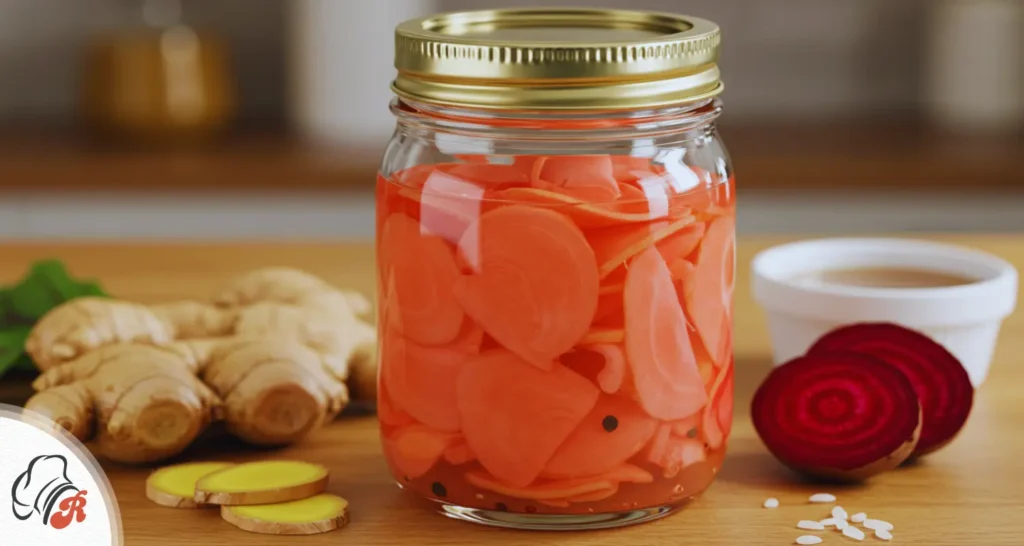
Pickled ginger is not just tasty—it’s packed with health benefits that make it a great addition to your meals. From aiding digestion to boosting immunity, this condiment offers more than meets the eye.
Supports Digestion
Pickled ginger contains natural compounds that soothe the stomach and improve digestion.
Eases Bloating and Indigestion
Ginger has been used for centuries to reduce bloating and discomfort after meals. Pickled ginger retains these properties, making it a great choice for people with sensitive stomachs.
Helps Relieve Nausea
If you’re feeling queasy, pickled ginger can act as a natural remedy to ease nausea. This is especially helpful for motion sickness or during pregnancy.
Provides Anti-Inflammatory Benefits
The anti-inflammatory properties of ginger make it a powerful food for reducing pain and swelling.
Reduces Inflammation in the Body
Regular consumption of ginger may help reduce chronic inflammation, which is linked to conditions like arthritis and heart disease.
Boosts Immunity
With its antioxidants, pickled ginger supports your immune system by fighting off free radicals that can cause illness.
Low in Calories, Big on Flavor
Pickled ginger is a low-calorie condiment that adds a punch of flavor without extra guilt.
Great for Weight Management
It’s perfect for those watching their calorie intake, as a small amount adds a lot of taste.
Enhances Healthy Eating
With its zesty and tangy notes, pickled ginger can make even the simplest meals more enjoyable.
Customizing Your Pickled Ginger Recipe
One of the best things about making pickled ginger at home is that you can customize it to suit your taste and dietary needs.
Adjusting the Sweetness
You can control the sweetness level of your pickled ginger by tweaking the brine recipe.
Using Traditional Sugar
Traditional pickled ginger recipes use sugar to balance the tanginess of the vinegar. Adjust the amount of sugar to make it sweeter or less sweet, depending on your preference.
Opting for Natural Sweeteners
For a healthier twist, substitute sugar with honey, agave syrup, or stevia. These natural alternatives work just as well and add a unique flavor profile.
Choosing Your Vinegar
The type of vinegar you use will impact the final flavor of your pickled ginger.
Rice Vinegar for a Mellow Taste
Rice vinegar is the traditional choice, offering a light, mild acidity that complements the ginger perfectly.
Apple Cider Vinegar for a Fruity Kick
Apple cider vinegar adds a fruity tang and extra health benefits, making it a popular alternative to rice vinegar.
Experimenting with Additions
Adding other ingredients to your pickled ginger can create new and exciting flavors.
Adding Heat with Chili Flakes
For a spicy twist, sprinkle chili flakes into the brine before pouring it over the ginger.
Infusing with Herbs
Fresh herbs like mint or basil can add an aromatic touch, giving your pickled ginger a unique and refreshing flavor.
Conclusion
Making pickled ginger at home is quick, easy, and incredibly rewarding. With just a few simple steps, you can create a batch that’s ready to enjoy in 24 hours.
Not only does pickled ginger elevate the flavor of dishes like sushi and salads, but it also provides numerous health benefits, from aiding digestion to boosting immunity.


